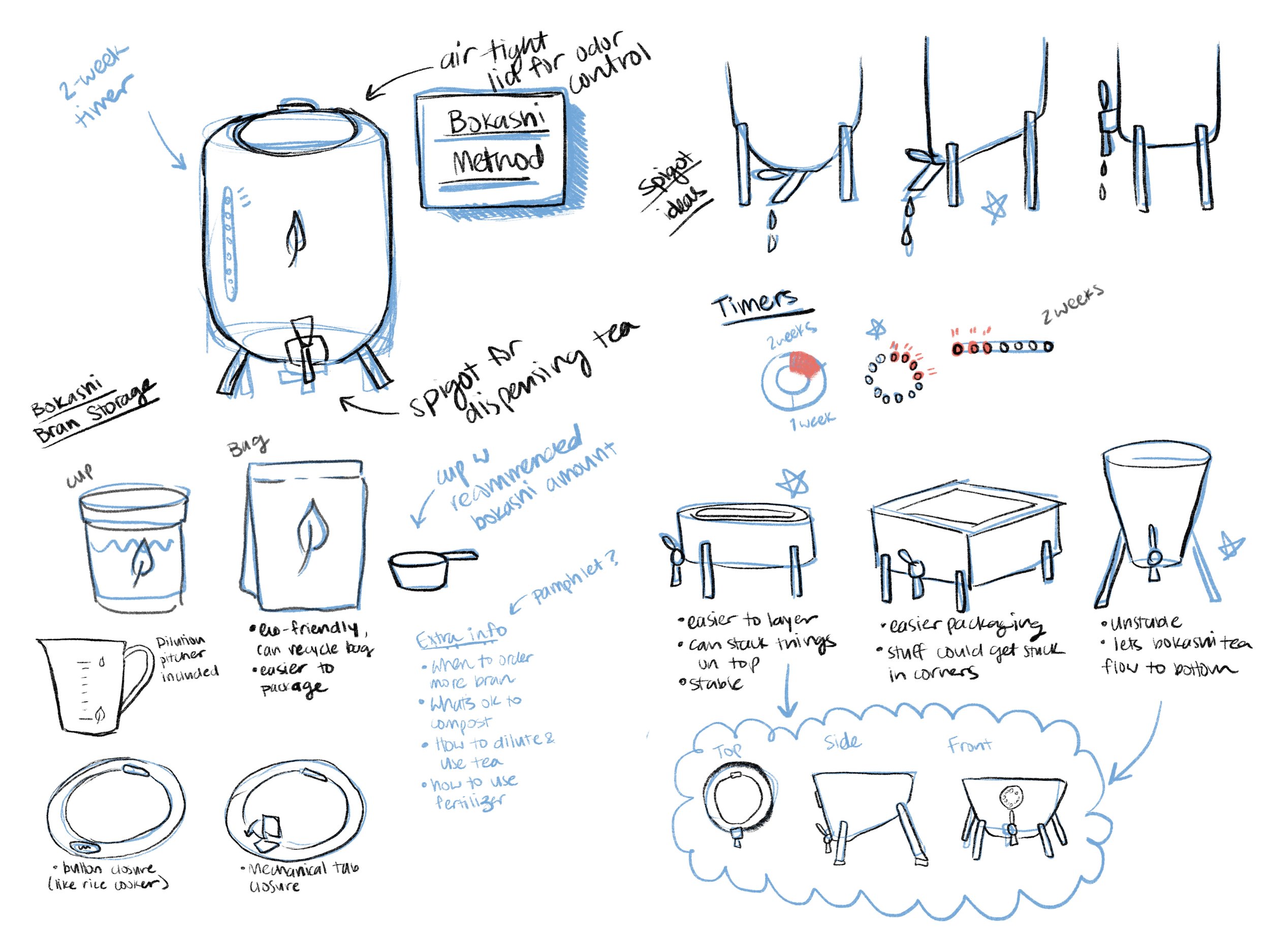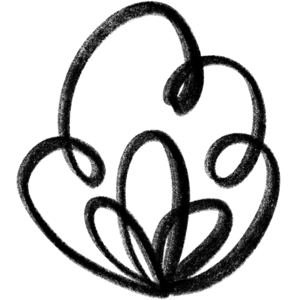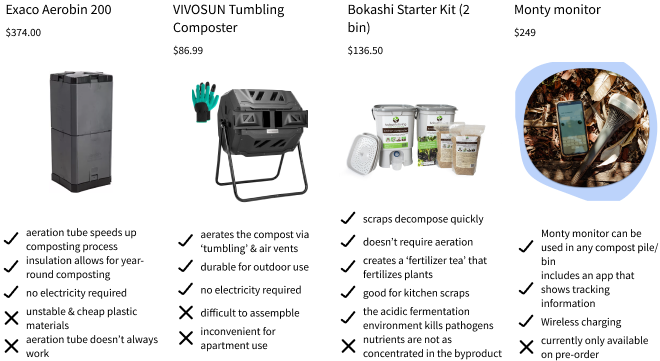Boki Bin
A visual exploration of a modernized composting system.
Class Project for Visual Design Thinking | November 2021
Background
As part of a class project for Visual Design Thinking at Georgia Tech (ID 2401), we were tasked with designing a solution to an environmental or social problem. I chose to tackle small-scale composting, specifically for those living in the city and don’t have easy access to a backyard or communal composter.
This project is primarily focused on developing communication skills via graphic design & hand drawings.
Although it would be super cool if this product was implemented, I was mostly focusing on practicing visual presentation skills and exploring visual design elements, rather than developing a product to go to market.
Time: 2 weeks
Role: Product Designer
Team:
Brainstorming Stage: Me + 3 Industrial Design minor students
Research, Sketching, and Designing Stage: Just me!
Tools:
Figma
Procreate for iPad
Hand-drawing
Skills:
Interface design
Product design
Sketching
Mindmapping
The Problem
“The U.S. Environmental Protection Agency (EPA) estimates that 20-30% of what we throw away at home could be composted” If this food was composted, we could reduce the associated CO2 emissions from transporting trash to landfill.
However, if someone doesn’t have easy access to a compost bin in their area or don’t know much about composting, there could be friction to start.
How might we enable urban dwellers and beginner environmentalists to start composting?
Process
Research
My research mainly consisted of exploring different methods of composting and their processes, and comparing various home composting solutions already on the market, noting their pros & cons.
Develop
Creating empathy
Before I jumped into product designs, I took some time to build empathy with the target market first. The pain points, user needs, and problem statements were drawn from articles & forums outlining reasons why people don’t compost, as well as personal experiences from my research group.
Narrowing things down
After comparing different composting methods and products available on the market, I chose to base my product design around the bokashi fermentation method. This method is especially suitable for urban dwellers and apartment living, since this method is low-odor, low-maintenance, and the compost created is suitable for house plants.
While ideating product ideas, I kept in mind that the bokashi method:
is an anaerobic process - to properly ferment, the compost must be airtight rather than aerated
requires a 2-week fermenting period
produces a fermented compost “tea”, as well as solid compost
Time to brainstorm!
I developed these concept sketches in Procreate, going for both getting my ideas down on paper and refining my concept!
To create the more refined sketches, I utilized drafting & perspective drawing skills taught in class.



Deliver
Show, don’t tell
For the final board, I chose to illustrate the product idea by incorporating the user story into the image - compost goes in, bokashi tea comes out and fertilizes house plants!
Give a helping hand
To encourage the user to learn about and stick with at-home composting, I designed an app with learning tools to pair with their boki bin. Some of the included features are:
Boki Dashboard to help the user keep tabs on the status of their composting system
FAQ & Articles to answer questions like “What do I do if my boki bin starts smelling weird?” “How can I use the solid compost waste?”
Quiz to pin down whether an item is compost-able or better kept outside their bin
Including an app that the user can refer to and learn from as they compost addresses confusion around composting that many beginners face.
Final Presentation Boards



On our last day of class, we brought our designs to the studio and heard feedback from our teachers and peers!
“Unanimously, the reviewers thought you made a very well thought out, well presented project - excellent design and presentation. The mixture of hand drawing and digital type, etc., and a clear organized presentation is exactly what a professional designer hopes to accomplish. Congratulations.”
— Professor feedback
I learned…
Starting over & backtracking on your ideas is sometimes necessary
Instead of showing just the idea, try visualizing the idea in context to garner understanding and wonder - a picture is worth a thousand words!
If I had more time, I would…
Refine & iterate on the app designs for a cleaner & more cohesive look
Conduct user research to gauge interest in the product and reveal shortcomings in my design




